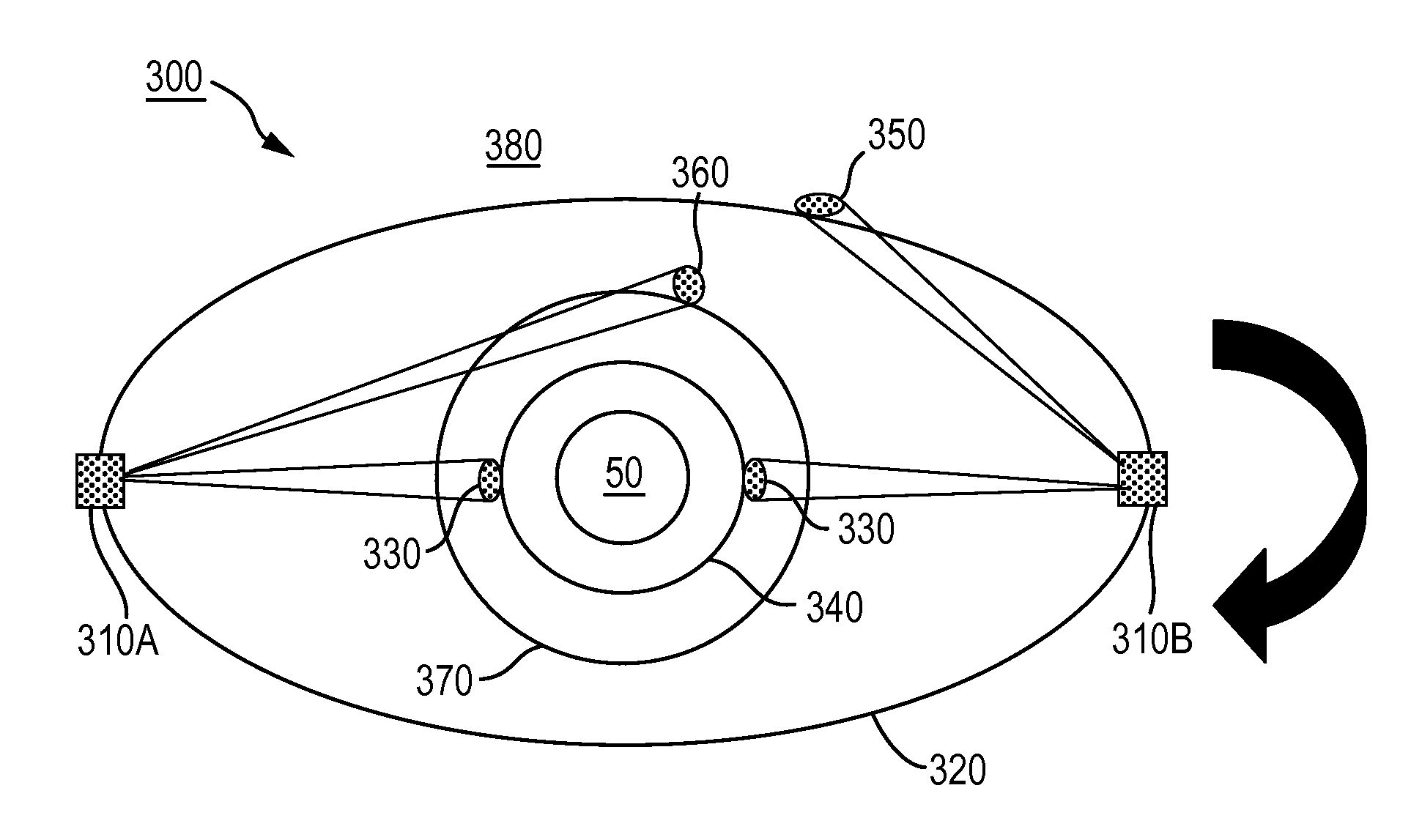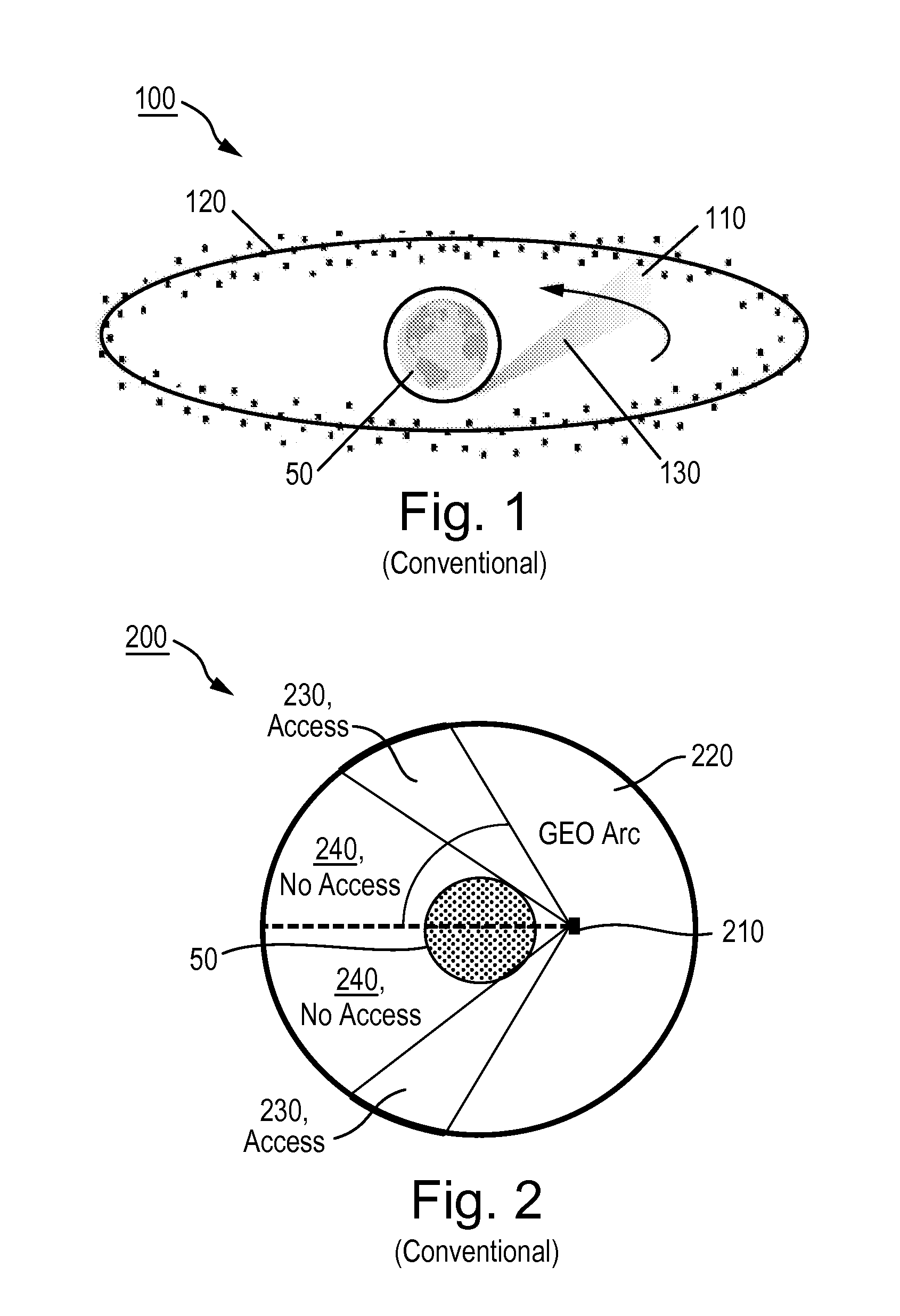Optimal space situational awareness system
- Summary
- Abstract
- Description
- Claims
- Application Information
AI Technical Summary
Benefits of technology
Problems solved by technology
Method used
Image
Examples
Embodiment Construction
Satellite-based detection and imaging systems and methods according to one or more embodiments may employ two or more satellites positioned in an Earth orbit and configured to observe objects in various orbits including those viewed (i) against the Earth's background; (ii) against a sunlit Earth background; and (iii) against a space background. At least one of the satellites may be provided with an electro-magnetic sensor that is responsive to electromagnetic radiation having a wavelength that discriminates against substantial reflection of electromagnetic radiation from the Earth's atmosphere to observe the space object.
The satellites may be positioned in various orbits to detect, track, and / or image various space-based objects. These orbits may include, but are not necessarily limited to, LEO, GEO, or GPS orbits. These orbits may be especially important for space cyber warfare, anti-satellite countermeasures and foreign satellite warfare.
In one implementation, the satellite system...
PUM
 Login to View More
Login to View More Abstract
Description
Claims
Application Information
 Login to View More
Login to View More - R&D
- Intellectual Property
- Life Sciences
- Materials
- Tech Scout
- Unparalleled Data Quality
- Higher Quality Content
- 60% Fewer Hallucinations
Browse by: Latest US Patents, China's latest patents, Technical Efficacy Thesaurus, Application Domain, Technology Topic, Popular Technical Reports.
© 2025 PatSnap. All rights reserved.Legal|Privacy policy|Modern Slavery Act Transparency Statement|Sitemap|About US| Contact US: help@patsnap.com



